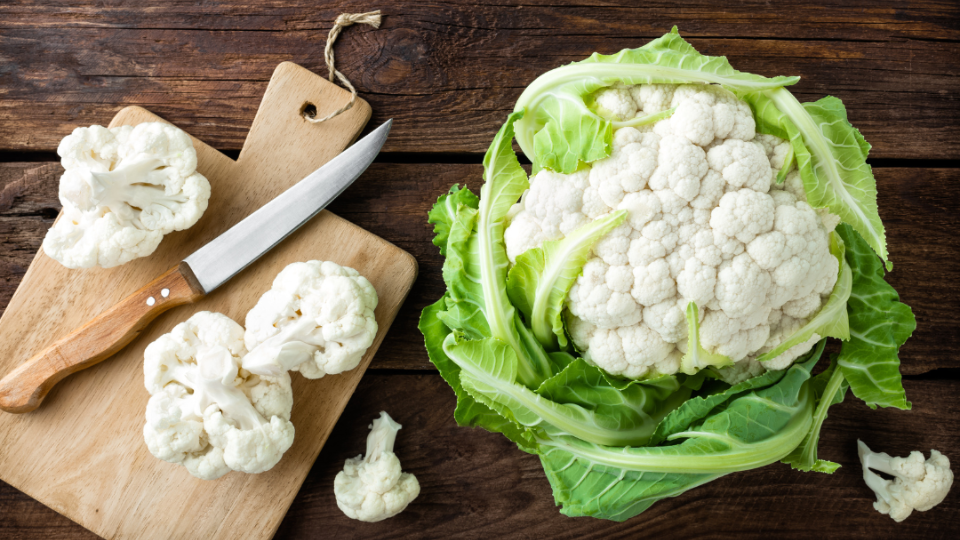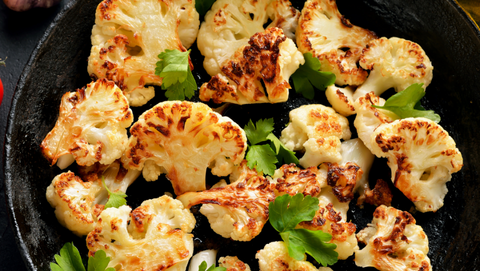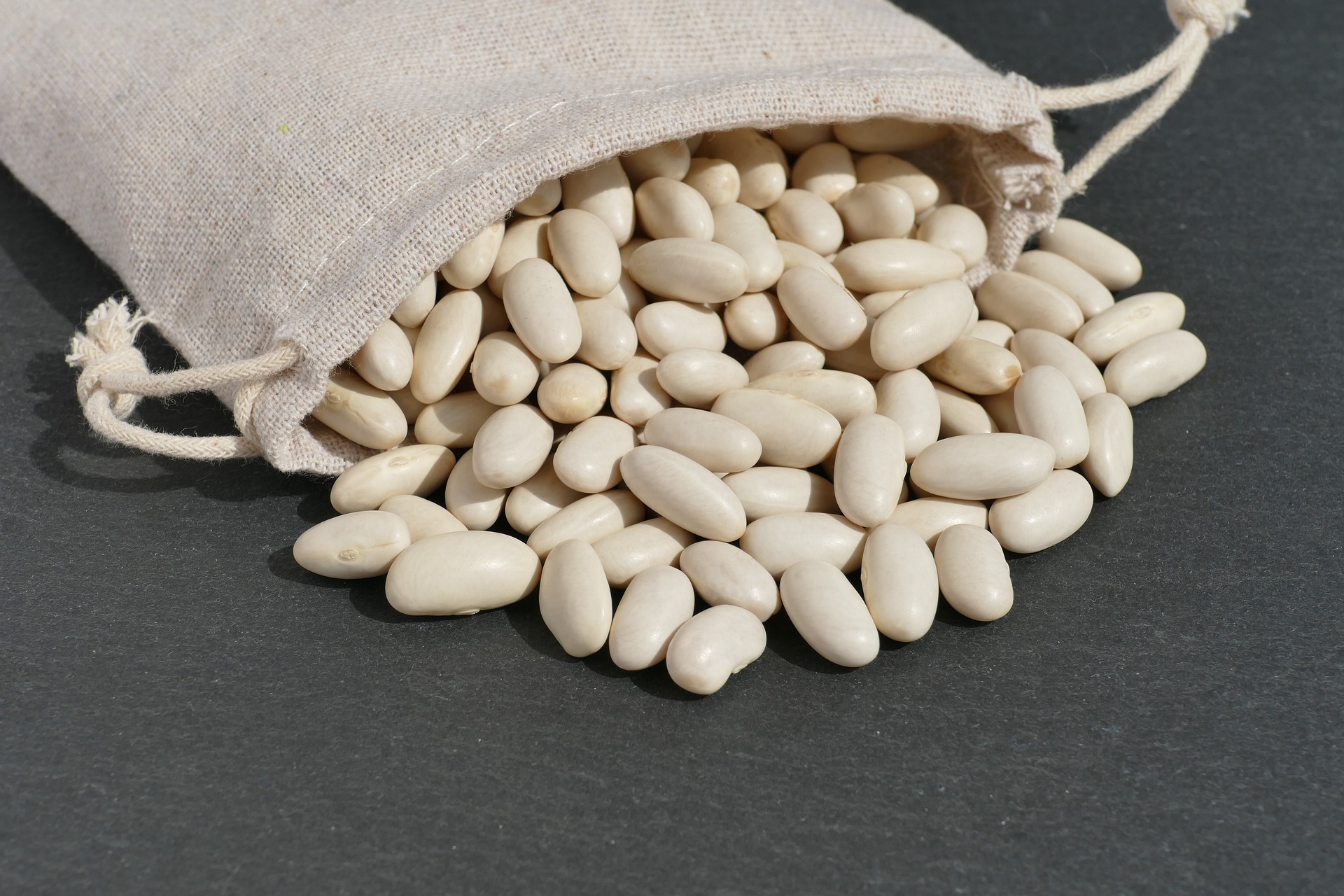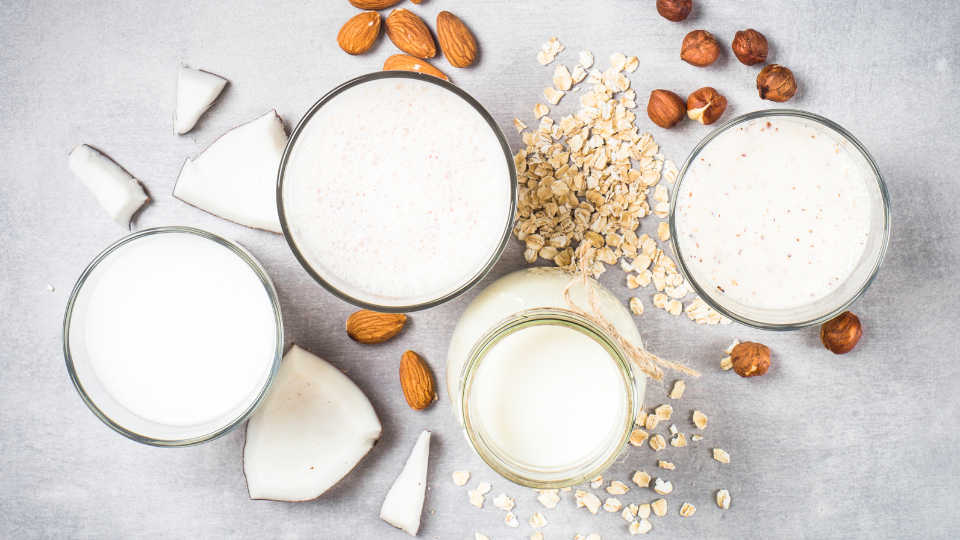Fruit and Vegetable Guide Series: Cauliflower

Utah Local Fresh Season: Summer or Fall
Availability: Cauliflower is available year-round in the grocery store but tastes best when it is in season from December through March.
Selecting: Cauliflower is traditionally white in color. There are other varieties available including purple, green, and orange cauliflower. Select cauliflower that has a compact, space-free head, firmly attached bright green leaves, and is heavy for its size. Avoid heads that have brown spots or spaces between the florets.
Cleaning and Preparing: Do not wash until ready to use. To prepare a cauliflower head, turn the head upside down so that the leaves are facing upward. Take a sharp knife and cut the center out of the bottom of the cauliflower. Wash the cauliflower under running water and shake out excess water. Break the top of the cauliflower (also known as curds) into smaller chunks with your hands.
Storing: Cauliflower can be stored in a plastic bag for up to a week in the vegetable crisper drawer of the refrigerator. The sooner you eat it, the sweeter it will be. Signs of spoilage include dark brown or black spots, mushy, soft, or slimy spots on the cauliflower.
Eating: Cauliflower has a fresh, mild taste and unique texture. It can be purchased fresh, frozen, or pre-cut, and tastes great raw or cooked.
 Cooking: Cauliflower can be eaten in a variety of ways including raw, steamed, roasted and sautéed.
Cooking: Cauliflower can be eaten in a variety of ways including raw, steamed, roasted and sautéed.
- Raw: Wash and break into bite-sized pieces. Serve with hummus, ranch, or other vegetable dips.
- Steam: Place cauliflower in a steaming basket over boiling water. Cover and steam for 3 to 5 minutes or until barely fork tender.
- Microwave: You can also steam your cauliflower in the microwave. Put cut up cauliflower in a microwave safe bowl. Fill the bowl with ½-1 inch of water, depending on how big of bowl you use. Microwave for one minute. If it is not soft enough, cook in 30-second intervals until the cauliflower is done.
- Roast: Coat cauliflower with olive oil and sprinkle with salt and pepper. Place on a baking sheet and roast in a 450°F oven for about 10 minutes, flip over and roast for five 5 more minutes or until tender-crisp. Tender-crisp means that the cauliflower is cooked all the way through, but still has some snap to it.
- Sauté: Heat a small amount of olive oil in a pan, over medium-high heat. Add cauliflower and stir-fry until browned and tender-crisp.
Preserving: The best home preservation method for Cauliflower is freezing. For more information go to the National Center for Home Food Preservation at http://www.uga.edu/nchfp/how/freeze/cauliflower.html
Growing: Cauliflower can be grown in Utah. For more information see “Cauliflower In
the Garden” by Dan Drost and Michael Johnson at: https://extension.usu.edu/yardandgarden/research/cauliflower-in-the-garden
Nutrition Highlights: Cauliflower is very high in vitamin C and is a good source of foliate and fiber. Orange cauliflower has 25 times the vitamin A as white.
References
- https://blogs.extension.iastate.edu/answerline/2019/10/14/the-many-colors-of-cauliflower-purple-green-orange-and-white/
- https://www.choosemyplate.gov/eathealthy/vegetables
- https://fruitsandveggies.org/fruits-and-veggies/cauliflower/
- https://www.macmillandictionary.com/us/dictionary/american/tender-crisp
- Cauliflower, by Tammy Vitale and Janet Anderson. Available at: http://vimeo.com/12443686
Authors
Anita Raddatz, Extension Assistant Professor and Janet Smith, Extension Assistant Professor
Guide Editors: Heidi LeBlanc and Debra Christofferson
Additional Editors: Marie Stosich, Gayla Johnson, Eileen Milligan, Jenna Dyckman
*This publication is a part of a series created by Create Better Health and Utah State Extension Employees. It has been reviewed and updated to include current evidence-based research and recommendations.
Related Nutrition Articles






